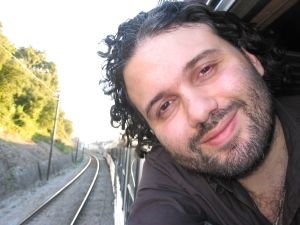 This month our short interview features David Aragao, post-doctoral fellow with the macro-molecular crystallography team at the Australian Synchrotron.
This month our short interview features David Aragao, post-doctoral fellow with the macro-molecular crystallography team at the Australian Synchrotron.
Describe your job in 25 words or less.
Balance my research in the membrane structural biology field with giving the best user support, and learn how to maintain and improve MX beamlines.
Best thing about your job?
Not having two single days with the same job and having a true love for what I do.
Worst thing about your job?
Not always having the time I would like for family and leisure.
Biggest challenge facing your team?
It is not incredibly hard to have a state-of-the-art beamline. The tricky bit is keeping it in that state at all times 24/7.
Apart from the Australian Synchrotron, what's the coolest job you've ever had?
Junior researcher in a virtual reality lab. We used to compete to see who would be able to resist the longest getting seasick while navigating worlds upside down.
Best things about living in Melbourne and why?
Having similar weather to what I would encounter in my native Portugal. I hope also to be able to take a scuba diving course, which is something I’ve dreamed about for quite a long time now.
Your favourite overseas destination and why?
So many that is hard to name a single one. Also they vary a bit with the mood. If I could decide where to go now for a two-three week holiday I would probably vote for the Azores: an archipelago with nine volcanic islands in the middle of the Atlantic with fabulous flora and fauna. And the best thing is that it is not yet spoiled! Shhh! Do not tell anyone! On another side I have an incredible love for trains and train travel. I'll always be ready for more crazy train travel – maybe the Trans-Siberian next time?
A little-known fact about the Australian Synchrotron?
I've just made three months here. Ask me again in nine months and I'll have a better answer.
What’s the most unusual or interesting sample you’ve seen on the MX beamlines at the AS?
The use of what is now trademarked as a Crystal Harp. This uses polyimide-coated quartz capillaries to grow protein crystals by capillarity diffusion in a way that gives the whole assembly the look of a harp.
What would you like to see happen in the future with the MX beamlines at the AS?
Getting more and more oversubscribed. This will lead to the constant need for creative ways to do more with the same.
What are your own research interests?
My research interest focus is on proteins involved in membrane secretion systems. In the biological membranes of cells, and in particular of pathogens, there are a few membrane proteins involved in the secretion of components to the exterior of the cell. These components have various functions, including some associated with infection, protection against antibiotics, and harvesting of important host components to be used to boost the survival of the invading organism. I'm interested in understanding how these export systems work and how we can affect them.
